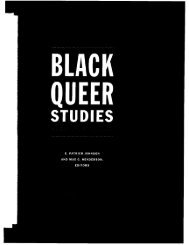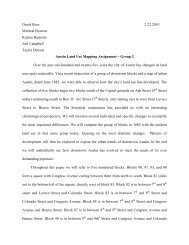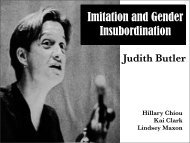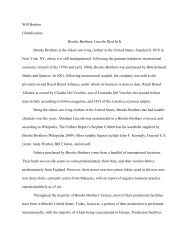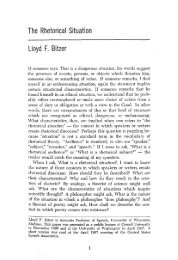Coherence, Cohesion, and Writing Quality Stephen P. Witte; Lester ...
Coherence, Cohesion, and Writing Quality Stephen P. Witte; Lester ...
Coherence, Cohesion, and Writing Quality Stephen P. Witte; Lester ...
Create successful ePaper yourself
Turn your PDF publications into a flip-book with our unique Google optimized e-Paper software.
196 College Co~nposition <strong>and</strong> Communicationindex of cohesive density. In the high-rated essays, 31.7% of all words contributeto explicit cohesive ties while only 20.4% of the words in the lowratedessays contribute to such ties.The ways in which writers of the high- <strong>and</strong> low-rated essays form cohesiveties also distinguish the two groups of five essays from each other. Writers ofthe high-rated essays use a substantially higher relative percentage of immediate(High: 41.6%/Low: 32.8%) <strong>and</strong> mediated (High: 7.6Y:/Low: 0.8%)cohesive ties than do the writers of the low-rated essays. On the other h<strong>and</strong>,writers of the low-rated essays use more mediated-remote (High: 25.9%/Low:36.7%) an'd remote ties (High: 26.9?6/Low: 29.7%). These percentages allowus to focus on some crucial differences between the two essay sets. Thelarger relative percentage of immediate cohesive ties in the high-rated essayssuggests, among other things, that the better writers tend to establishstronger cohesive bonds between individual T-units than do the writers ofthe low-rated essays. Analyses of reference <strong>and</strong> conjllnctive cohesion support thisobservation. Writers of high-rated essays employ reference cohesion abouttwice as often, 84.1 times to 47.8 times per 100 T-units, as the writers oflow-rated papers. The largest difference in the occurrence of referentialcohesion is reflected in the higher frequency of third-person pronouns in thehigh-rated essays (High: 25.1 per 100 T-units/Low: 5.1 per 100 T-units). Thislower frequency of third-person pronouns in the low-rated essays may be adirect result of the less skilled writers' attempts to avoid errors such as ambiguouspronoun reference. Because third-person pronouns usually referback to the T-unit immediately preceding, we can infer that the writers ofhigh-rated essays more often elaborate, in subsequent <strong>and</strong> adjacent T-units,topics introduced in a given T-unit.Also contributing importantly to the greater use of immediate cohesive tiesis the frequency with which the more skillful writers use conjzlnction to linkindividual T-units. Conjunctive ties most often result in immediate cohesiveties between T-units. It is not surprising, then, to find that the writers ofhigh-rated essays employ over three times as many conjunctive ties (High:65.4 per 100 T-units/Low: 20.4 per 100 T-units) as the writers of low-ratedessays. Neither is it surprising to discover that the more skillful writersemploy all five types of conjunction while the less skillful writers use onlythree. As is the case with pronominal references that cross T-unit boundaries,conjunctives are most often used to extend concepts introduced in oneT-unit to other T-units which follow immediately in the text. Thus the moreskillful writers appear to extend the concept introduced in a given T-unitconsiderably more often than do the less skillful writers. One major effect ofsuch semantic extensions is, of course, essay length; <strong>and</strong> this finding helps toexplain why the high-rated essays are, on the average, 375 words longer thanthe low-rated essays.The relative frequency of lexical cohesion gives another indication that thewriters of high-rated essays are better able to exp<strong>and</strong> <strong>and</strong> connect their ideas




